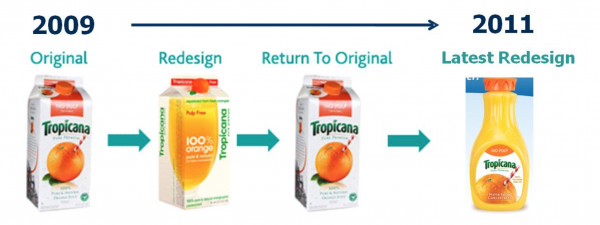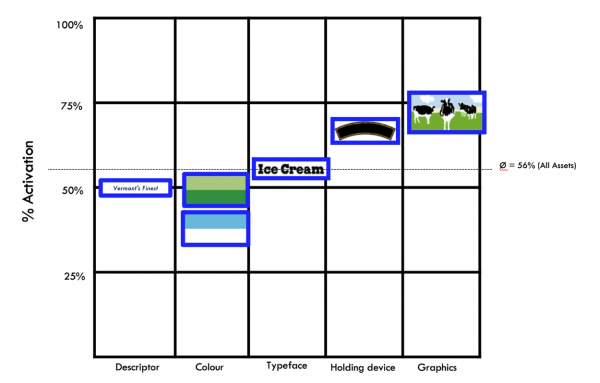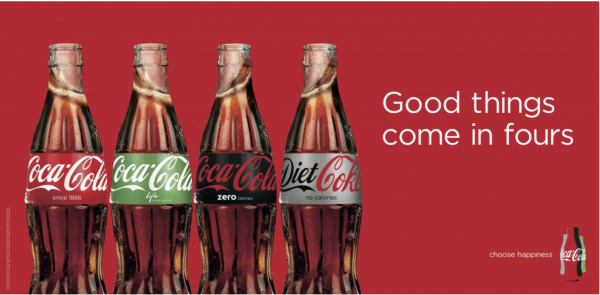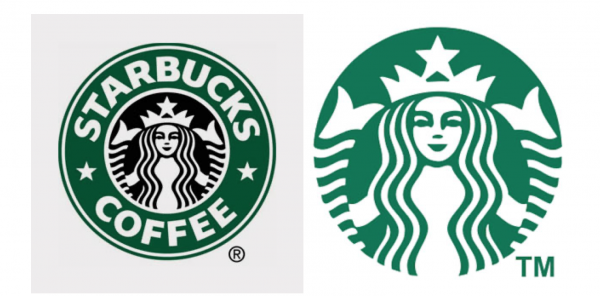How can you make your brand as distinctive as Coke?
Post by Simon Gore, Managing Partner and brandgym’s head of Naming & Visual Identity.
Reading an article about the history of Coca-Cola’s ‘contour’ bottle led me to thinking about just how important this sort of distinctive asset is for a brand, and how carefully it needs managing. The 1916 design brief for Coca-Cola’s iconic glass bottle was ‘for it to be recognisable even in the dark’ and the bottle has now been used by Coke for over 100 years, with attentive updating keeping it fresh (1).
So, how do you go about making your brand as distinctive as Coca-Cola?
1. Brand equity destruction
Companies manage physical assets such as factories and IT infrastructure with great care, and change these tangible assets only after due diligence and financial analysis. However, businesses often have a much more gung-ho attitude to brand assets, even though they are just as valuable, if not more so.
In brandgym research over half of marketers surveyed say the main reason for changing brand properties is organisational change, especially changes of marketing director. This premature property changing prevents memory structure being created. One respondent went as far as saying ‘Many managers destroy valuable brand properties for their own career benefits. ’A further 20% of people say change is a judgement call, with a mere 24% saying that a change in brand property is a strategic choice based on quantitative data.
The results of this type of approach can be costly, as shown by the now (in)famous and disastrous design changes resulting from Tropicana’s decision to remove the highly recognised ‘orange and straw’ device, that we posted on here.
2. Measure your assets …
We recommend that companies source proper data on their brand assets. On brandgym projects we do this using a research method called ‘Iconic Asset Tracker’ (IcAT) by Decode Marketing. This taps into the ‘system 1’, intuitive thinking people use when making decisions. Example below from an IcAT study on UK ice cream, Ben & Jerry’s shows that the brand’s ‘cows’ are key, and, as such, have been used as the brand has stretched…
3. … AND treasure your assets
Once you have measured your assets, we recommend taking a structured approach to how to manage them, identifying the ones you should really ‘treasure’, and those you can afford to change or even lose. When working with our clients, we summarise this approach as ‘KULA’:
Keep: critical visual equities that are part of the memory structure used to help identify and choose your brand. These should be protected and amplified throughout the mix. Example: Coca-Cola’s scripted typeface and bottle shape.
Update: visual equities that help drive recognition but need updating. Example: Apple’s apple logo.
Lose: visual devices which only add clutter and complexity, and are not helping make your brand distinctive. Example: the simplification of the Starbucks logo
Add: elements which are missing from your brand identity, and are needed to refresh the brand and to make it more relevant and distinctive. Example: the addition of more distinctive and impactful colours to the FedEx logo, and the addition of the ‘hidden’ speed arrow (between the E and x)
In conclusion, if you want to be as iconic as Coke, both measure and treasure your distinctive brand assets. Remember what made your brand famous, but always look for opportunities to refresh your brand’s look and feel to ensure it remains relevant and motivating to your target consumers. And finally make sure your brand assets stimulate all the senses, thereby creating a richer, more memorable brand experience.
Sources:









